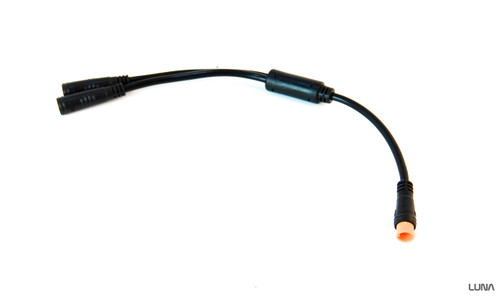If ground is shared via the battery between the controllers, then that should be the only ground they share to prevent ground loops.
Power is only needed from one controller; doesn't matter which one as long as it's always on when the throttle needs to be used.
Signal splits to both.
Teklektik's 2WD thread (a Yuba Mundo, IIRC) covers a lot of things about wiring up a multicontroller system, if it's helpful.
If you ever think you'll need to "tune" the controllers' response to the throttle, to make them equal or unequal, you can put the signal to the center tap of a pot (say, 10kohm) and each outside pin of the throttle to one of the controllers. This can give you a small amount of tuning control to make the throttle signal different between the two. How much control depends on the internal resistances of the controllers and the current that flows thru the resistors (current is typically very low). If you need more tuning than that it may require active circuitry, or programmable throttle response in the controllers.
Power is only needed from one controller; doesn't matter which one as long as it's always on when the throttle needs to be used.
Signal splits to both.
Teklektik's 2WD thread (a Yuba Mundo, IIRC) covers a lot of things about wiring up a multicontroller system, if it's helpful.
If you ever think you'll need to "tune" the controllers' response to the throttle, to make them equal or unequal, you can put the signal to the center tap of a pot (say, 10kohm) and each outside pin of the throttle to one of the controllers. This can give you a small amount of tuning control to make the throttle signal different between the two. How much control depends on the internal resistances of the controllers and the current that flows thru the resistors (current is typically very low). If you need more tuning than that it may require active circuitry, or programmable throttle response in the controllers.



